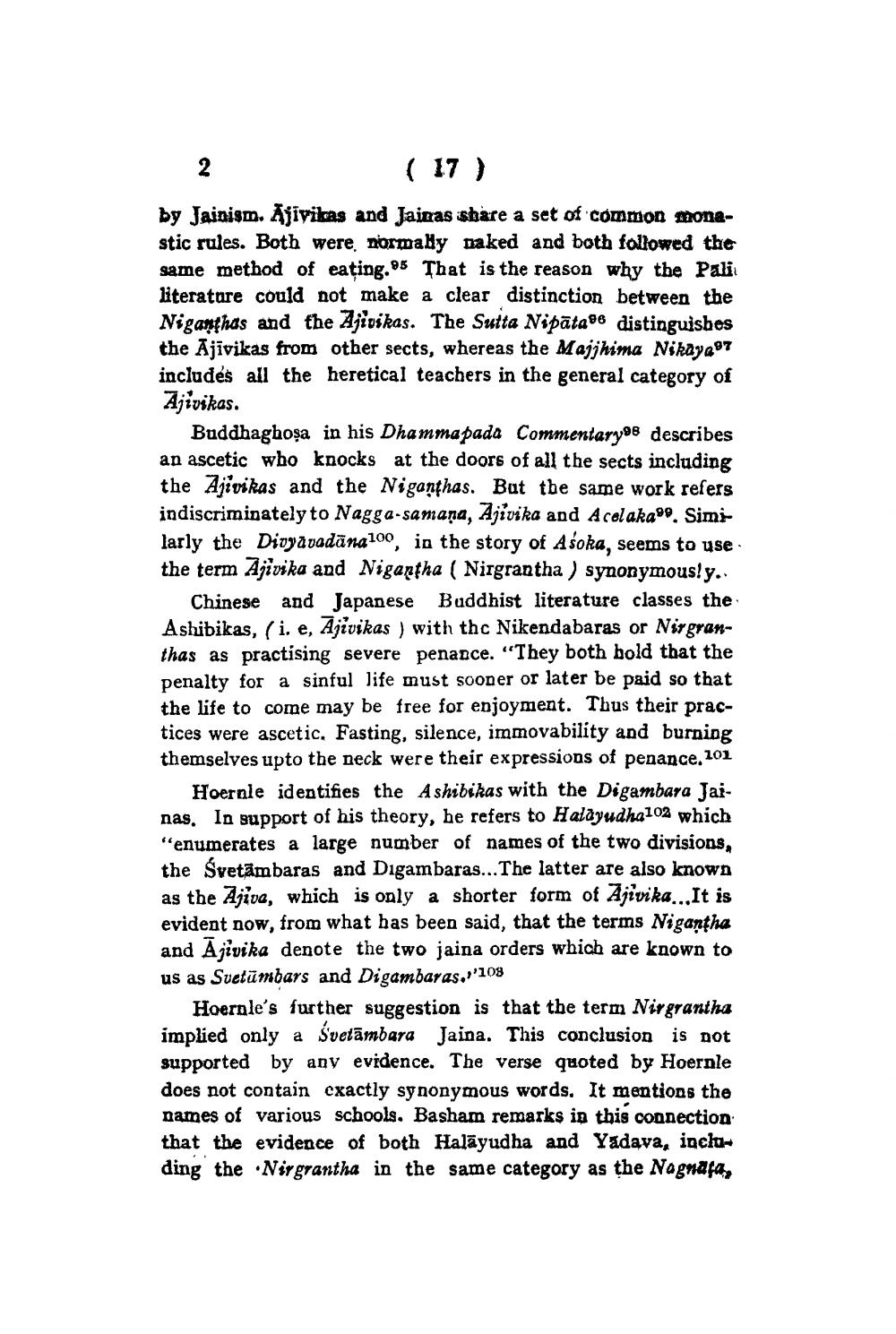________________
( 17 )
by Jainism. Ajivikas and Jainas sbare a set of common monastic rules. Both were, normally naked and both followed the same method of eating. That is the reason why the Pali literature could not make a clear distinction between the Niganthas and the Ajivikas. The Sutta Nipāta86 distinguishes the Ajīvikas from other sects, whereas the Majjhima Nikaya87 includes all the heretical teachers in the general category of Ajivikas.
Buddhaghosa in his Dhammapada Commentary®8 describes an ascetic who knocks at the doors of all the sects including the Ajivikas and the Niganthas. Bat the same work refers indiscriminately to Nagga-samana, Ajivika and Acelakao. Simi larly the Divyavadāna1oo, in the story of Asoka, seems to use the term Ajivika and Nigartha (Nirgrantha ) synonymously..
Chinese and Japanese Buddhist literature classes the Ashibikas, (i. e, Ajivikas ) with thc Nikendabaras or Nirgranthas as practising severe penance. "They both bold that the penalty for a sinful life must sooner or later be paid so that the life to come may be free for enjoyment. Thus their practices were ascetic. Fasting, silence, immovability and burning themselves upto the neck were their expressions of penance. 101
Hoernie identifies the Ashibikas with the Digambara Jainas. In support of his theory, he refers to Halayudha102 which "enumerates a large number of names of the two divisions, the Svetämbaras and Digambaras...The latter are also known as the Ajiua, which is only a shorter form of Ajinika...It is evident now, from what has been said, that the terms Nigantha
jivika denote the two jaina orders which are known to us as Suetumbars and Digambaras. '108
Hoernle's further suggestion is that the term Nirgrantha implied only a Svetāmbara Jaina. This conclusion is not supported by any evidence. The verse quoted by Hoernle does not contain exactly synonymous words. It mentions the names of various schools. Basham remarks in this connection that the evidence of both Halāyudha and Yadava, inchading the Nirgrantha in the same category as the Nagnäftig
and




